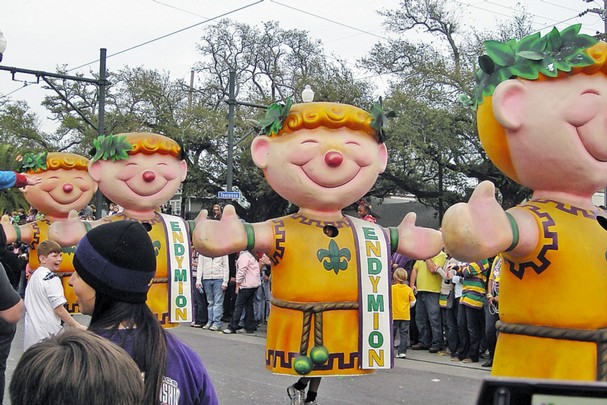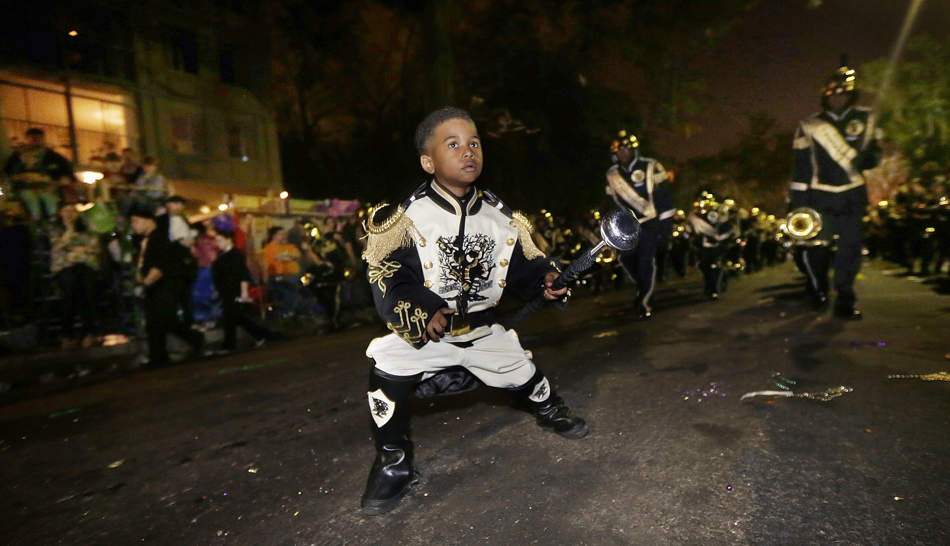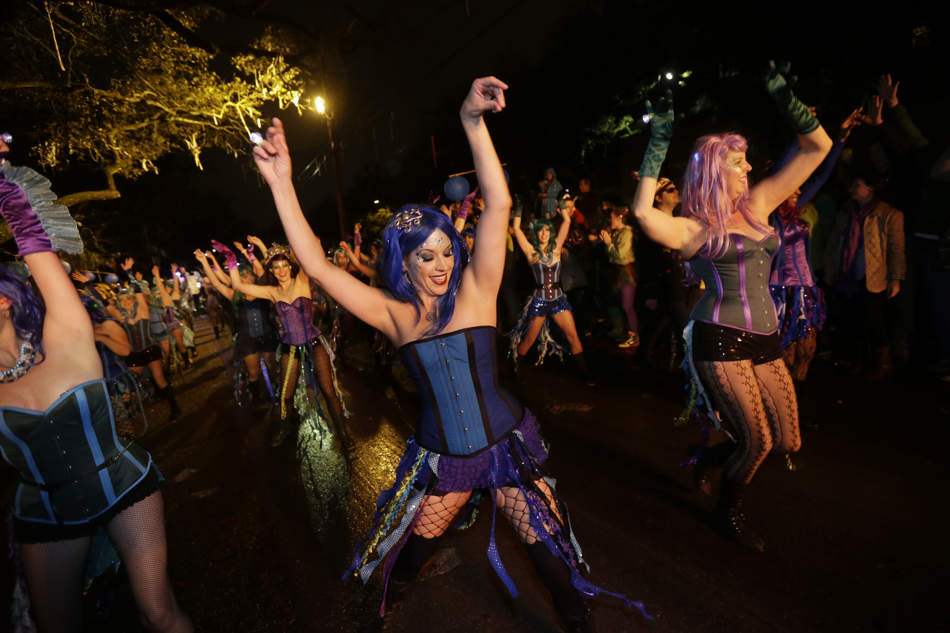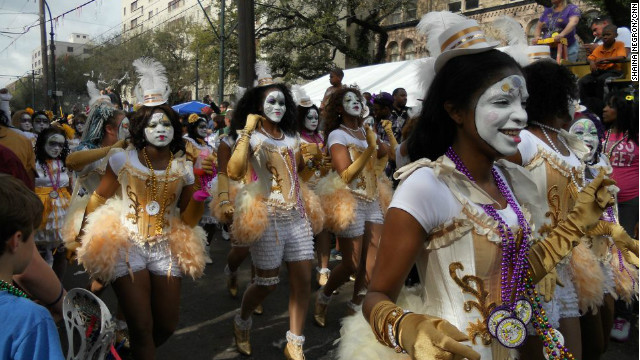When someone says the words Mardi Gras it is generally associated with a gigantic street party – which is exactly right. Mardi Gras has become an iconic carnival now celebrated in many countries around the world. This is a guide on celebrating Mardi Gras in New Orleans what to expect at this incredible celebration in New Orleans, Louisiana, in the United States.
Guide on celebrating Mardi Gras in New Orleans: What is Mardi Gras?

The festival is rooted in the ancient European Carnival traditions. It marks the final celebrations before the period of fasting during Lent in the Roman Catholic Religion, although New Orleans Carnival is enjoyed by people of any belief.
“Mardi Gras” specifically refers to the Tuesday before lent, the highlight of the season, but the term is also used for the whole carnival season. Usually part of the winter social season, celebrations go on for about two weeks. Usually there is one major parade each day of the carnival season.
The New Orleans Carnival season is a variation of the traditional manner of preparing for the start of the Catholic season of Lent. It starts after Twelfth Night, on January 6, and is a season of parades, balls, and king cake parties.
The float riders toss throws to the crowds; the most common throws are strings of colorful plastic beads, doubloons (aluminum or wooden dollar-sized coins usually impressed with a krewe logo), decorated plastic throw cups, and small inexpensive toys. Major krewes follow the same parade schedule and route each year.
MORE: 10 OF THE BEST FESTIVALS YOU SHOULD TRY TO VISIT
What to expect
After spotty earlier festivities, parades roll most nights starting two weekends before Mardi Gras. Things kick into high gear the weekend before Mardi Gras, when the population of New Orleans more than doubles, meaning travellers will need to book a room well in advance.
The largest and most elaborate parades take place the last five days of the season. In the final week of Carnival, many events large and small occur throughout New Orleans and surrounding communities.
While many tourists center their Carnival season activities on Bourbon Street and the French Quarter, none of the major Carnival parades have entered the French Quarter since 1972 because of its narrow streets and overhead obstructions.
There’s an all day party along the riverfront downtown on Lundi Gras (“Fat Monday”, the day before Mardi Gras) followed by more parades that evening, and just when you think things couldn’t get more wild, the climax of Mardi Gras takes Carnival to an entirely new level.
Wearing a mask or costume on Mardi Gras Day is highly recommended by Mardi Gras veterans; one becomes part of the party, rather than just watching it. Veterans also start the party on Mardi Gras morning, even if you aren’t usually a morning person. Mardi Gras officially ends promptly at midnight Tuesday.
The next day is Ash Wednesday (nicknamed locally “Trash Wednesday” from the debris left in the streets from the parties), the start of Lent. Wearing Mardi Gras beads during Lent will mark you as a tourist, so it’s time to take them off.
The Parades are a major part of Mardi Gras

Mardi Gras parades are a big attraction. The parades are put on by private organizations known as “krewe”s, and they do not receive any government or corporate sponsorship.
Watching a parade in New Orleans is a participatory party; crowds dance to the music of the bands and clamor for “throws”. Throws are the trinkets thrown from krewe members on the floats to the crowd, including plastic beads and cups, often decorated with the emblem of the krewe.
Pick up the Mardi Gras Guide magazine, or consult the newspapers for parade schedules and routes. Note that many of the smaller parades, marching krewes, and neighborhood pageants are usually not listed in these schedules.
The majority of the parades follow a standard route, starting Uptown at Napoleon Avenue and going down St. Charles Avenue to the Central Business District then on to Canal Street at the upper border of the French Quarter.
There are sizable parades two weekends before Mardi Gras, then every night starting the Wednesday before Mardi Gras. There are also several parades during the day on the Saturday and Sunday before Mardi Gras. The parades on Mardi Gras Day are in the morning and mid day.
Biggest parades
Endymion Parade

The Saturday night before Mardi Gras. An exception to the standard Uptown route, Endymion starts in Mid City and travels along Canal Street to the Central Business District, traveling St. Charles only the sort distance up to Lee Circle in the opposite direction from the other parades. Endymion 2008 is the first parade to return to the Mid City route since Katrina.
Bacchus Parade

The Sunday night before Mardi Gras. Krewe of Bacchus features national celebrity monarchs each year, and draws hundreds of thousands of visitors.
Orpheus Parade

The Monday night before Mardi Gras, known as “Lundi Gras” (“Fat Monday”). Musician oriented krewe, Harry Connick Jr. is the krewe captain.
Zulu Parade

On Mardi Gras morning. The Zulu Social Aid & Pleasure Club parade is well-known for its interesting history as it originated over 100 years ago as an African-American organization satirizing the White krewes during the era of racial segregation.
Rex Parade

On Mardi Gras morning. Founded in 1872, “Rex…King of Carnival” has been the international symbol of New Orleans Mardi Gras since the first krewe appeared. Rex was the first krewe to hold an organized daytime Parade and remains the main event parade of Mardi Gras.
Mardi Gras Day Parades

The parades on Mardi Gras Day are not to be missed as they offer a variety of krewes and save the very best till last. The parades on Mardi Gras Day start early morning so be sure to get up early for the festivities to ensure you don’t miss out on seeing the parades on this day.
Keeping safe
It is important to take precautions when taking part in the festivities at Mardi Gras. The large crowds mean people can get separated from friends, so always make sure you keep your buddies close during the parades and parties, and keep your passport and other important possessions locked in your room.
Exposing body parts, or “flashing”, in an effort to catch more beads or throws, is frowned upon by the police department and can be grounds for a ticket or an arrest. Though it is a growing trend, this practice mostly only takes place on and around Bourbon Street in the French Quarter.
For travellers who are more interested in seeing the parades than getting drunk, the Uptown and Mid-City parade routes are family friendly gatherings for citizens of all ages to enjoy the parades.

